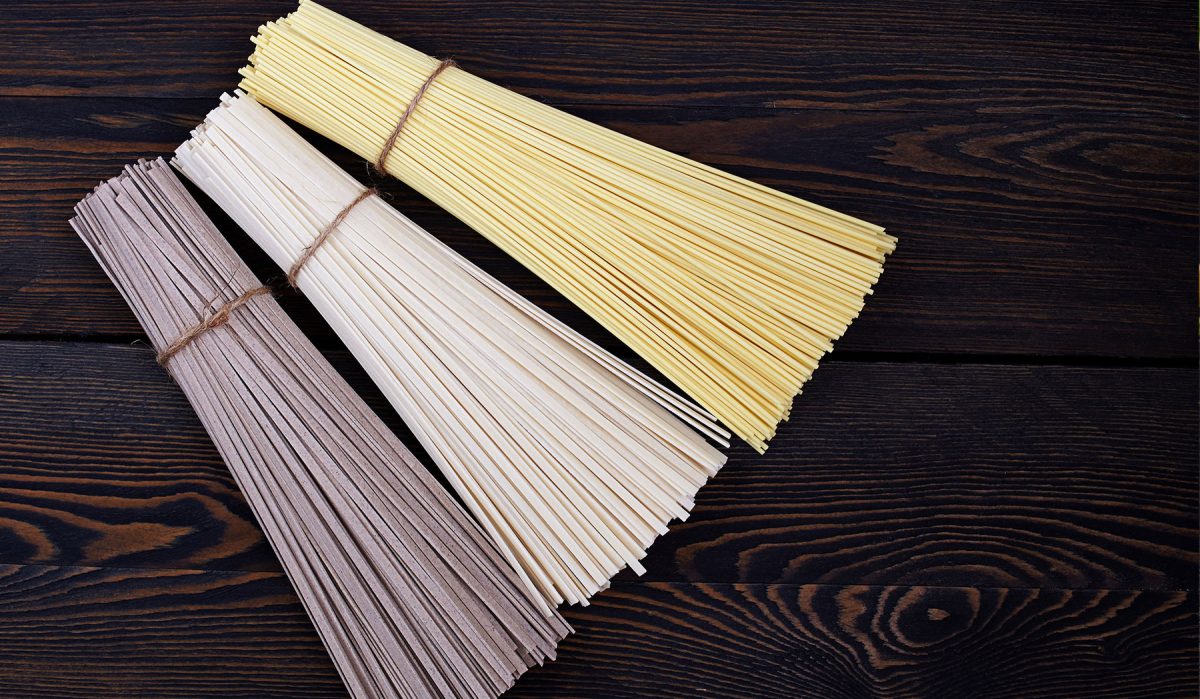There are a variety of noodles used in Japanese cuisine, all of varying sizes, textures, and flavours. Most are made with buckwheat flour, wheat flour, mung bean starch, potato starch, or flour and an alkaline agent. They are normally served with a dipping sauce or in a soup, but can also be quickly pan fried as in Chinese style cooking.
The most popular are the noodles made from flour.
Soba is made from buckwheat flour, high in protein and vitamin B. The colour is often brownish, with black flecks, and it is thin. Because buckwheat does not have gluten to make it stretch, another starch is added, such as wheat flour or yam flour, to make it stretchable.
Soba is always boiled al dente, making it slightly firm. Over boiled soba is quite unpleasant, as the mushiness resulting creates a pasty mass in your mouth while chewing. Enjoy it served in a broth topped with shrimp tempura and sliced green onion, or chilled and dipped into a slightly sweetened sauce as a refreshing and light meal in the summer.
Wheat noodles, such as udon, kishimen, somen and hiyamugi can easily be made with all purpose flour, salt and water. The long noodles can be flat, fat, or thin, but all are pure white. Their texture is pleasantly chewy.
Some popular dishes made with these types of wheat noodles are miso nikomi udon. Kishimen, a flat variety of wheat noodle, is served in a nabe (earthenware pot with a lid) with a rich miso broth and topped with an egg. It is a speciality of Nagoya and its surrounding area.
On the other hand, somen is served cold, with a dipping sauce similar to chilled soba.
Mung bean noodles, ryokuto harusame, are wire thin and transparent. They are firm and don’t soften as quickly as soba noodles. Similarily, potato starch noodles are also thin and transparent, though soften more quickly while boiling.
They are commonly served as an addition to hot pots, as an accompaniment to other more substantial ingredients.
Chukasoba , also known as Chinese-style noodles, are most often served fried and topped with assorted meat and vegetables. This is known as yakisoba. The noodles can also be served in a unique broth made from meat stock, called ramen.
These noodles are quite easy to spot, as they tend to be wavy, on the very of soft curls, thin and yellow. Their texture is firm, and not so chewy. They are made by stretching and restretching the dough until it forms into long and thin noodles. Quite time consuming.
